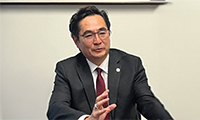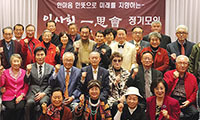Remaking PCs, With 10 Fingers in Mind, to Spur Sales
MOUNTAIN VIEW, California - For years, the computer industry has dabbled with the touch-screen technology that lets people poke icons on a display to accomplish tasks like picking a seat at an airport check-in kiosk. Apple elevated such technology from a novelty to a must-have feature on mobile devices with its iPhone. Users can flip through pictures with a flick of a finger, or make a document larger by placing two fingers against the screen and spreading them apart.
Now both personal computer manufacturers and software makers hope to do more with touch on larger devices by letting people use all 10 fingers.
“You don’t even operate your TV with two fingers,” said Amichai Ben- David, the chief executive officer of N-trig, which produces touch-screen technology for PC makers. “In order for this to feel really natural, you need more than two fingers for sure.”
The industry hopes the feature spurs sales. Hewlett-Packard, Dell, Intel and Microsoft expect that when companies and consumers increase their spending, touch technology will help persuade them to upgrade. Computers with the special screens will probably cost consumers about $100 more than standard machines.
Hewlett-Packard sells a PC with an early version of the technology. The $1,150 TouchSmart PC has been popular, the company says, particularly in kitchens as a family computer.
But Mr.Ben-David said only about two million of about 300 million PCs sold last year were touch computers.
Hewlett-Packard has already been promoting touch technology for large businesses. It sells a custom touch interface for both desktops and laptops. Customers can turn these machines into kiosks for, say, selling merchandise at a sporting event.
The PC industry wants to make touch functions more sophisticated, allowing on-screen objects to be twisted and turned with several fingers.
The next version of Windows from Microsoft, Windows 7, will usher in a new era of touch technology when it appears on PCs later this year, according to Mr.Ben-David. Backed by Microsoft, Israel-based N-trig uses software and sensors to create a computer screen that can interact with pens and fingers. N-trig’s technology works by pumping an electrical signal through the screen. When a finger hits the screen, the electricity is discharged. Software interprets that to move graphics on the screen.
Microsoft and N-trig have created a type of software interface that lets other companies add touch functions to their programs. Such touch software can handle lots of fingers hitting a screen at once rather than just relying on one or two digits, as most of today’s touch screens do.
SpaceClaim, which makes software for designing objects in 3-D, has taken a business-oriented approach to touch. Its software creates 3-D models that can be turned and altered via twohanded touches.
Frank DeSimone, the company’s head of development, urges other software makers to try something new rather than just replicating the functions of a mouse. “A lot of people say they will support touch, but they do a disservice to everyone by not doing anything interesting,” he said.
스마터리빙
more [ 건강]
[ 건강]이제 혈관 건강도 챙기자!
[현대해운]우리 눈에 보이지 않기 때문에 혈관 건강을 챙기는 것은 결코 쉽지 않은데요. 여러분은 혈관 건강을 유지하기 위해 어떤 노력을 하시나요?
 [ 건강]
[ 건강]내 몸이 건강해지는 과일궁합
 [ 라이프]
[ 라이프]벌레야 물럿거라! 천연 해충제 만들기
 [ 건강]
[ 건강]혈압 낮추는데 좋은 식품
[현대해운]혈관 건강은 주로 노화가 진행되면서 지켜야 할 문제라고 인식되어 왔습니다. 최근 생활 패턴과 식생활의 변화로 혈관의 노화 진행이 빨라지고
사람·사람들
more많이 본 기사
- 새해 첫날 대형화재 참사… 155명 … 1
- 해외 송금시 1% 세금 1월1일부터 부과 개시
- “키스, 불륜 맞지만 숙행은 억울해”..상간남 입 열었다
- ‘255만 7,047명’ 미국내 한인… 1
- 나나, 강도 피해→역고소 사건에 입 열었다.. “말도 안 되는 상황”
- ‘김태희♥’ 비, 난리통 연예계 속 의미심장 일침.. “나태하면 사건·사고 나”
- “새해 복 많이 받으세요!” 2026 ‘병오년’ 힘찬 출발
- 또 일가족 살해·자살 4명 시신 발견 ‘비극’
- [신년 사설] 붉은 말의 힘찬 기상·역동성으로 도전과 성취를
- KCM, 세 아이 아빠 됐다…지난달 셋째 득남
- 이국주 “AI와 결혼한단 말 이해..나도 친해져 조언까지”
- 한인 마켓에서 사라진 ‘플라스틱 봉투’
- 내년부터 ‘스튜어드십 코드’ 강화
- 시니어 ‘최소인출’ 미준수… 세금 불이익
- 오바마케어 보조금 결국 종료… 새해 최대 쟁점으로
- CD 금리 하락, 주식은 불안… ‘원금 지키며 시장에 참여하는 방법’
- 온라인에 가짜 광고 ‘렌트 사기’ 기승
- 변종 수퍼독감 ‘비상’ 사망자 3,100명 넘어
- 새해초 폭우 강타… 엔젤레스 산악도로 붕괴
- [손영아의 문화산책] ‘슈만의 연가’… 170년 전 멈춘 시간, 끝나지 않은 사랑
- LA 등 배치 주방위군 ‘불법’… 완… 1
- 비트코인, 연 하락마감 3년만에 내림세로 돌아
- [미리 보는 CES 2026 ] “올해 핵심 트렌드… AI·로봇·모빌리티·디지털 건강”
- [신년 휘호] 光明大道 (광명대도)
- 유명 성우 송도순 별세
- [금요단상] 차가운 길, 이불 한 장의 온기
- 미군에 쫓기는 베네수行 유조선 감싼 … 1
- 생명보험은 이제 ‘삶’을 위해 더 필요해진다
- 류지현 감독 “반드시 미국으로 간다”
- 연말 샤핑 ‘역대 최고’ 사상 첫 1조달러 돌파
- ‘8세난 소년의 눈으로 본 어른들의 세상’
- [김재천 칼럼] 2026년, 미·중 대타협은 가능할까
- 트럼프, 가구 관세 인상 1년간 연기
- ‘우크라서 날아온 감사의 국기’
- [만화경] 33년만에 퇴역하는 장보고함
- 촛농처럼 흘러내리다 석벽처럼 솟아올라… 단양, 석회동굴의 천태만상
- “美, 평택기지 비행대대 비활성화”…주한미군 감축 관련성 주목
- 멕시코, 50%까지 관세 한국 등 FTA 미체결국
- “유튜브에 아동정보 불법 무단제공”
- 한국, 북중미 월드컵서 원정 8강 도전… ‘손흥민 라스트댄스’
- 연준 12월 금리인하… ‘만장일치 실패’
- 대한항공, 새해 첫 고객맞이 행사
- 오늘 LA 총영사관 시무식 한인회·상의 5일 신년하례
- [새 영화] 고독에 관한 얘기이자 인간관계의 필요성 강조한 드라마
- 뉴욕증시 뜨거웠던 2025년 ‘아듀’… 새해도 기대
- [조지 F. 윌 칼럼] AI 투자 붐이 걱정된다면?… 역사적 맥락을 보라
- [ 뉴욕증시 2025년 결산] 3대 지수 3년 연속 상승… AI 성장 ‘호재’
- 41세 생일 제임스 17점…레이커스는 디트로이트에 대패
- [왈가 왈부] 이혜훈 ‘정말 널 죽였으면’ 폭언, 장관직 수행 가능할까요
- LA평통 종교분과 상견례
1/5지식톡

-
 미 육군 사관학교 West Poin…
0
미 육군 사관학교 West Poin…
0https://youtu.be/SxD8cEhNV6Q연락처:wpkapca@gmail.comJohn Choi: 714-716-6414West Point 합격증을 받으셨나요?미 육군사관학교 West Point 학부모 모…
-
 ☝️해외에서도 가능한 한국어 선생님…
0
☝️해외에서도 가능한 한국어 선생님…
0이 영상 하나면 충분합니다!♥️상담신청문의♥️☝️ 문의 폭주로 '선착순 상담'만 진행합니다.☎️ : 02-6213-9094✨카카오톡ID : @GOODEDU77 (@골뱅이 꼭 붙여주셔야합니다…
-
 테슬라 자동차 시트커버 장착
0
테슬라 자동차 시트커버 장착
0테슬라 시트커버, 사놓고 아직 못 씌우셨죠?장착이 생각보다 쉽지 않습니다.20년 경력 전문가에게 맡기세요 — 깔끔하고 딱 맞게 장착해드립니다!장착비용:앞좌석: $40뒷좌석: $60앞·뒷좌석 …
-
 식당용 부탄가스
0
식당용 부탄가스
0식당용 부탄가스 홀세일 합니다 로스앤젤레스 다운타운 픽업 가능 안녕 하세요?강아지 & 고양이 모든 애완동물 / 반려동물 식품 & 모든 애완동물/반려동물 관련 제품들 전문적으로 홀세일/취급하는 회사 입니다 100% …
-
 ACSL 국제 컴퓨터 과학 대회, …
0
ACSL 국제 컴퓨터 과학 대회, …
0웹사이트 : www.eduspot.co.kr 카카오톡 상담하기 : https://pf.kakao.com/_BEQWxb블로그 : https://blog.naver.com/eduspotmain안녕하세요, 에듀스팟입니다…
케이타운 1번가
오피니언
 손영아 문화 칼럼니스트 / YASMA7 대표
손영아 문화 칼럼니스트 / YASMA7 대표 [손영아의 문화산책] ‘슈만의 연가’… 170년 전 멈춘 시간, 끝나지 않은 사랑
 김재천 서강대 국제대학원 교수
김재천 서강대 국제대학원 교수 [김재천 칼럼] 2026년, 미·중 대타협은 가능할까
 조지 F·윌 워싱턴포스트 칼럼니스트
조지 F·윌 워싱턴포스트 칼럼니스트 [조지 F. 윌 칼럼] AI 투자 붐이 걱정된다면?… 역사적 맥락을 보라
 이희숙 시인·수필가
이희숙 시인·수필가 [금요단상] 차가운 길, 이불 한 장의 온기
 한영일 / 서울경제 논설위원
한영일 / 서울경제 논설위원 [만화경] 33년만에 퇴역하는 장보고함

[왈가 왈부] 이혜훈 ‘정말 널 죽였으면’ 폭언, 장관직 수행 가능할까요
 정숙희 논설위원
정숙희 논설위원샴페인, 마지막 날과 첫날을 위하여
 조지 F·윌 워싱턴포스트 칼럼니스트
조지 F·윌 워싱턴포스트 칼럼니스트 [조지 F. 윌 칼럼] 저무는 2025년에 안도의 한숨
 김동찬 시민참여센터 대표
김동찬 시민참여센터 대표 [미국은 지금] 책임 있는 자본 없으면 커뮤니티 미래도 없다
1/3지사별 뉴스

지방세 공제한도 1만→4만달러로 상향
2026년 새해에도 뉴욕과 뉴저지 한인들의 일상에 크고 작은 영향을 미치는 다양한 규정과 법규가 새롭게 바뀌게 된다. 당장 1일부터 뉴욕시 최…
■ 사고- 한동대·뉴욕한인청소년센터 국제여름캠프

건국 250주년 워싱턴 모뉴먼트 라잇쇼
워싱턴 DC 내셔널 몰 중심에 위치한 워싱턴 모뉴먼트(Washington Monument)가 화려한 불빛으로 장식됐다. 지난 31일 새해 카운…
“소확행<작지만 확실한 행복> 즐겨요”

병오년 2026년 시작을 알리는 꽃가루
지난달 12월 31일 뉴욕 타임스퀘어 에서 열린 볼 드롭 행사에서 찬란한 볼이 새해를 알린 직후 2026년 1월 1일 0시를 기해 이날 메인 …
중부 캘리포니아 ‘한인 이민사’ 나왔다

오늘 하루 이 창 열지 않음 닫기 




















































.png)


댓글 안에 당신의 성숙함도 담아 주세요.
'오늘의 한마디'는 기사에 대하여 자신의 생각을 말하고 남의 생각을 들으며 서로 다양한 의견을 나누는 공간입니다. 그러나 간혹 불건전한 내용을 올리시는 분들이 계셔서 건전한 인터넷문화 정착을 위해 아래와 같은 운영원칙을 적용합니다.
자체 모니터링을 통해 아래에 해당하는 내용이 포함된 댓글이 발견되면 예고없이 삭제 조치를 하겠습니다.
불건전한 댓글을 올리거나, 이름에 비속어 및 상대방의 불쾌감을 주는 단어를 사용, 유명인 또는 특정 일반인을 사칭하는 경우 이용에 대한 차단 제재를 받을 수 있습니다. 차단될 경우, 일주일간 댓글을 달수 없게 됩니다.
명예훼손, 개인정보 유출, 욕설 등 법률에 위반되는 댓글은 관계 법령에 의거 민형사상 처벌을 받을 수 있으니 이용에 주의를 부탁드립니다.
Close
x